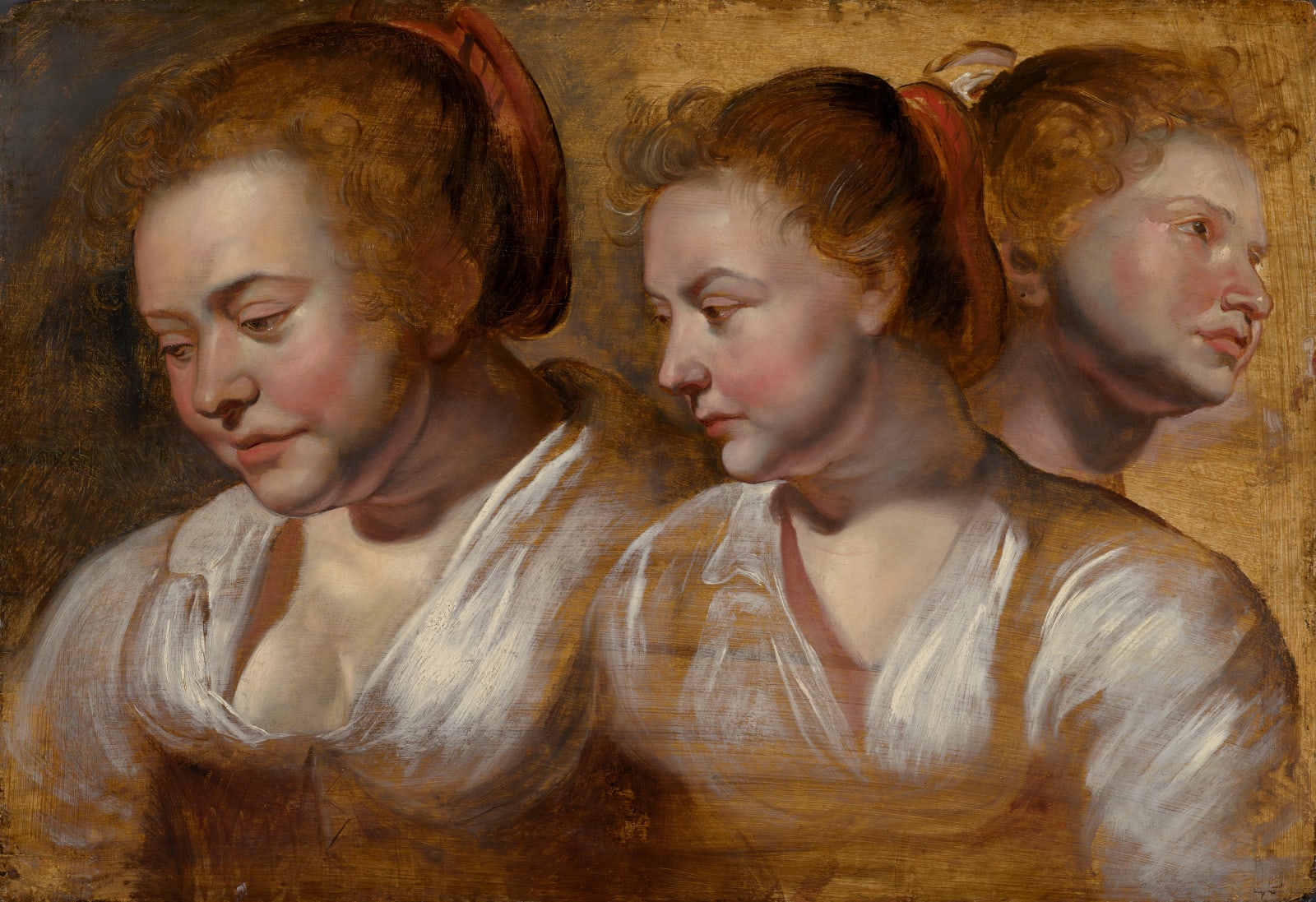Jacob Jordaens (1593-1678)
Jacob Jordaens was a Flemish painter, draughtsman and tapestry designer, known for his history paintings and portraits. After Peter Paul Rubens (1577-1640) and Anthony van Dyck (1599-1641), he was the leading Flemish Baroque painter. Unlike his contemporaries, he never travelled abroad to study Italian painting and his career is marked by an indifference to their intellectual and courtly aspirations. In fact, except for a few short trips to locations in the Low Countries, he remained in Antwerp his entire life. After surviving his two rivals, Jordaens became increasingly popular in the 1640s with commissions from royal patrons, even abroad. He was even tasked with completing unfinished commission started by Rubens.
At fourteen, Jordaens, a merchant’s son in Antwerp, was apprenticed to Adam van Noort (1561-1641), who also taught Rubens. In 1615, Jordaens entered the local artists guild. The following year, he married Van Noort’s eldest daughter Catharina (1589-1659) on May 15, 1616, with whom he had three children. Jordaens’ importance can also be seen by the number of artists working in his studio; the Guild of Saint Luke recorded fifteen pupils from 1621 to 1667. Although not all of them would become famous, a position in Jordaens’ studio was highly desirable nonetheless. Jordaens was a wealthy man and remained active until late in life.
Although it is a considerable challenge to date Jordaens’ paintings, dendrochronological analysis of the panel suggests a plausible creation date from 1613 upwards.[1] An early date of 1615 was already suggested by Leo van Puyvelde in 1654, when the painting was still attributed to Rubens. Both artists executed oil sketches after life models to be used as a pictorial stock in their workshop by assistants for large commissions throughout their entire career. Although the present painting does not directly relate to any finished painting, there are some similarities in physiognomy and dress with Jordaens’ wife as depicted in the family portrait from circa 1615, either painted on the occasion of the couple’s engagement or wedding.[2] The present woman also shows similarities with the mothers in the Suffer the Little Children to Come Unto Me, dataed 1615-16 in the Saint Louis Museum Art Museum.
In order to comply with the demand for a natural instead of mannered style, artists studied models from real life.[3] The large history painting of the Flemish Baroque required several types of preparatory studies to supply their complex and monumental compositions. Apart from quickly executed sketches and more elaborate drawings, artists and their assistants used detailed studies for parts of their pictures. Model heads were apparently common property and freely used as needed. There are examples the same head used by Rubens, Van Dyck, Jordaens, and others. Three Itinerant Musicians in the Prado, previously attributed to Van Dyck and now fully attributed to Jordaens, is another example of a study of physiognomy.
Recent research conducted by the Statens Museum for Kunst in Copenhagen point to Jordaens and his workshop using cartoons to transfer the contours of the oil studies.[4] The model heads portraying certain prototypes with striking visual appeal such as the neutral expression of the present young woman could be endowed with any expression suitable for the final composition. Dr. Joost van der Auwera, senior curator at the Royal Museums of Fine Arts in Brussels has examined the present painting in person and believes it to be entirely autograph.
[1] Prof.Dr. Peter Klein, letter dated 10 April 2017 and CATS, Statens Museum for Kunst, 30 May 2017. The two oak panels originate from the Baltic/Polish regions. A creation date of 1613 and upwards is plausible.
[2] R.-A d’Hulst, Jacob Jordaens (1593-1678). Schilderijen en Wandtapijten, Vol. I, Antwerp 1993, p. 55
[3] Eva de la Fuente Pederson, “The Shiip and the Tax. Jacob Jordaens’ painting at Statens Museum for Kunst, in: Jordaens. The Making of a Masterpiece, Copenhagen 2009, p. 36
[4] E. de la Fuente Pederson, op.cit., p. 30
Provenance
Sale, Frankfurt, 25 April 1929, lot 100
With Kunsthandel D.A. Hoogendijk & Co., Amsterdam
With Arthur de Heuvel, Brussels
Collection Count Jan de Bousies, Brussels
His sale, Galerie Charpentier. Paris, 24 March 1953, lot 25 (as Rubens or his Studio)
Private collection, since 1953 by whom sold at
Sale, Christie’s, Amsterdam, 10 November 2008 (as Studio of Rubens), lot 122
With David Koetser, Zürich, 2009
Private collection, Belgium
Exhibitions
Maastricht, Bonnefantenmuseum, Jordaens. The Making of a Masterpiece, 13 April - 14 June 2009



